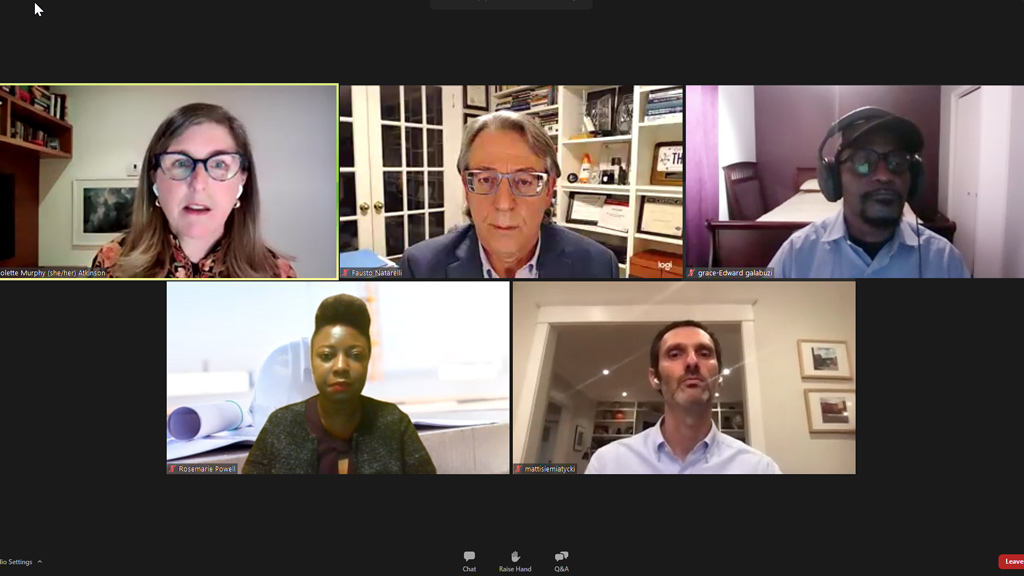When it comes to community benefits agreements, setting hard targets is key or nothing will change, said experts during a recent panel discussion.
“We need community benefits agreements, we need targets, because without targets there is ambiguity and in the face of ambiguity nothing will change. We need firm targets identifying around workforces and we need targets around inclusion for communities and a framework for development without displacement,” explained Matti Siemiatycki, interim director of the School of Cities and a professor of geography and planning at the University of Toronto.
“In the absence of these targets…when we come and reflect 10 years later what we will see is that these projects in fact propelled greater inequality, displacement and gentrification. We also need data to actually understand what is happening on these jobsites and who is being impacted.”
Siemiatycki’s comments were part of the Leaning into 2021: Rebuilding Better Through Community Benefits panel hosted by the Toronto Community Benefits Network (TCBN). The discussion was moderated by Grace-Edward Galabuzi, associate professor in the department of politics and public administration at Ryerson University.
Panellist Fausto Natarelli, adjunct professor at York University’s School of Public Policy and Administration, said leveraging the available body of practice and expertise to mitigate risks associated with setting hard targets will further increase the potential for benefits.
“There are enough case studies in North America and around the world from which we learn so that we can establish with confidence hard targets,” he said. “Without these goals you really can’t make progress and you really can’t leverage the hundreds of billions of dollars that are being invested in infrastructure in Canada alone. These are staggering numbers and they need to be leveraged in a way that provides for broader benefits to adjacent communities.”
Natarelli shared his perspective on how to enhance the scope of community benefits based on his past experience in provincial and municipal public service where he led large capital projects.
“Engaging communities and prospective partners needs to occur early in the infrastructure development cycle well before the procurement phase,” he recommended. “In my experience, this is where there were a lot of lost opportunities, particularly around these megaprojects that are delivered thorough public-private partnerships.”
Furthermore, he added, public sector sponsors of infrastructure investments should seek out community organizations like the TCBN and engage them as strategic partners.
The construction industry and infrastructure more broadly has a long history of exclusion, said Siemiatycki. He discussed the ways cities have fostered social inequality and spatial segregation.
“That was not by accident, that was systemic and baked into the way that zoning was carried out, that lending was carried out and that hiring was carried out,” said Siemiatycki. “The way our cities are designed and the way they are excluding people and the facts around the inequalities in who is contracting COVID were baked into our cities long before the pandemic hit. The question now is what do we do?
“We often talk about infrastructure as connecting communities, but we have to ask the question what communities are being connected? What infrastructure? And who is being displaced for those infrastructure projects to be built?”
Examples of this can be seen in transit project agreements, such as the Finch LRT, he said, adding while transit projects can create connections between communities, they can also propel gentrification and displacement.
“Even just in recent memory in this city, we can see the impacts of what happens when we invest in infrastructure and don’t focus on the community benefits,” said Siemiatycki. “The community hub for the Jane and Finch community, which had been promised in hard fought negotiations by the community and was almost erased at the stroke of a pen. The community including the Toronto Community Benefits Network and many others came and advocated and demanded that that project remain part of the Finch LRT as one of the benefits that comes out of accepting a maintenance facility in the community.”
Natarelli talked about York University’s social procurement and community benefits initiatives.
“York U developed its strategic policy related to what it means to be an anchor institution in the Black Creek and Jane-Finch communities about four years ago,” said Natarelli. “The focus of the strategy…is centered around the economic disadvantages, discrimination and/or barriers to equal opportunity experienced by people across the GTA particularly, but not limited to, key equity seeking groups. The university’s efforts were initially focused on the communities nearby to campuses but we are hopeful and we have been participating in initiatives that have impacts beyond those communities.”
York supports apprentices by providing hours and wages on university projects, has two pilot projects with a minimum social procurement spend of approximately five per cent of the overall project and designed an FAQ for all future bid packages to ensure social procurement is built into bid responses.
Follow the author on Twitter @DCN_Angela.











Recent Comments